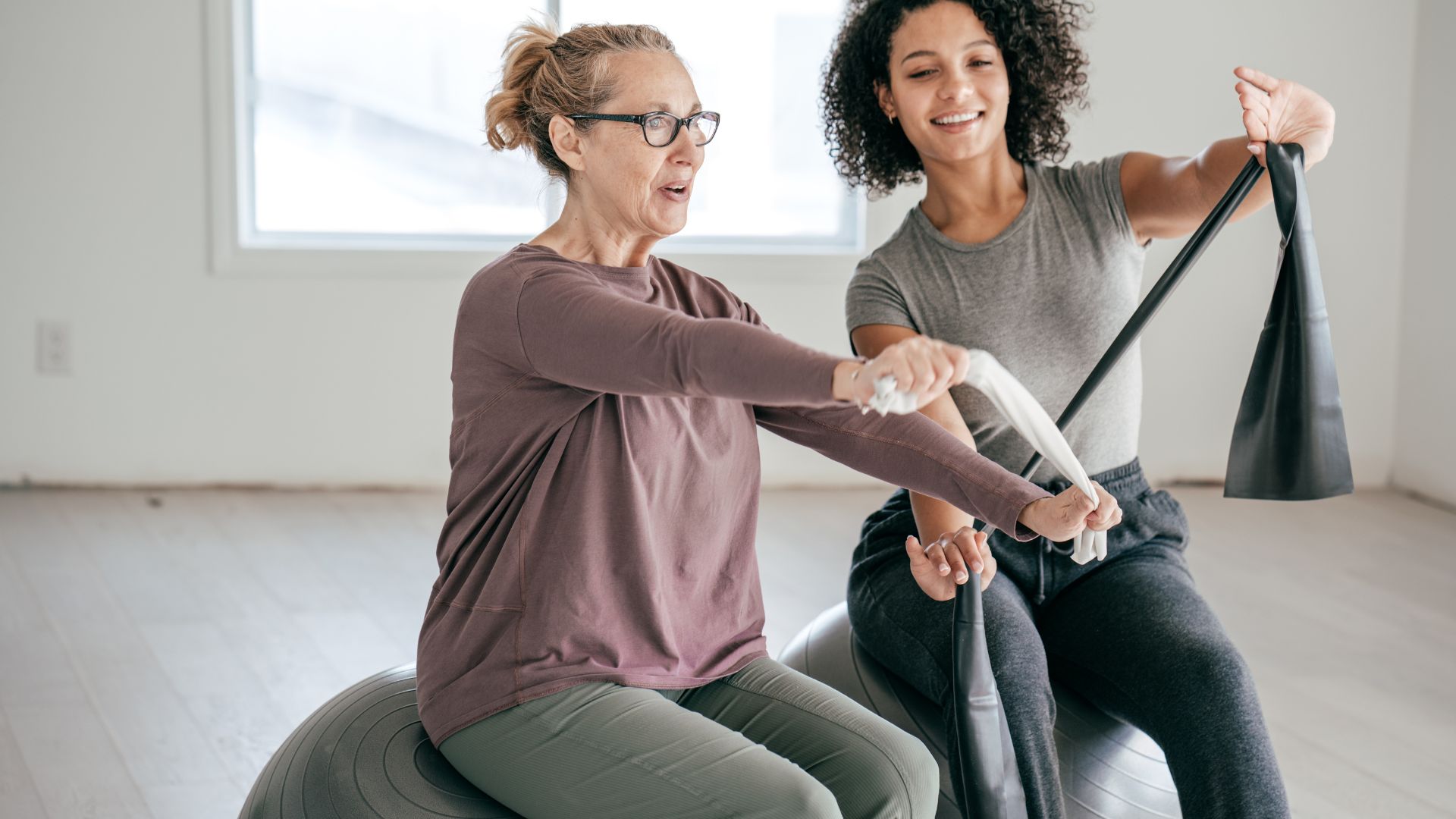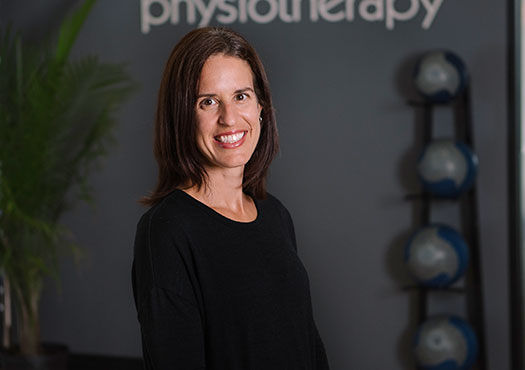Arthritis is the most significant chronic disease in Canada affecting 1 in every 5 Canadians.[i] The most common type of arthritis is osteoarthritis. Osteoarthritis commonly leads to joint stiffness, pain and reduced range of motion. At Propel Physiotherapy, our therapists have experience providing customized arthritis physiotherapy programs that help alleviate arthritis symptoms and help clients return to everyday activities
In this article, we discuss the common signs and symptoms of arthritis, the importance of early arthritis detection and disease management practices, including healthy lifestyle choices and arthritis physiotherapy.
Table of Contents:
- What is arthritis?
- Common signs and symptoms of osteoarthritis
- Early arthritis detection
- The importance of a healthy lifestyle for arthritic conditions
- Arthritis physiotherapy: best management practices
What is Arthritis?
Arthritis is a disease that affects joints and commonly results in joint pain, stiffness, swelling, and reduced range of motion. If left untreated, arthritis can result in permanent joint damage.
Arthritis can significantly impact one’s ability to perform every day activities, to participate in leisure activities as well as to work. Consequently, this can lead to low mood, anxiety and difficulty sleeping.
Arthritis is a complex disease with over 100 different types including the most common type, osteoarthritis. Other less common types of arthritis fall under the umbrella of inflammatory arthritic conditions and include lupus, gout, and rheumatoid arthritis.
This disease can strike people of any age from young children to older adults.
Common Signs and Symptoms of Arthritis
The most common signs and symptoms of arthritis include:
- Gradual onset
- Joint stiffness in the morning and after inactivity (< 30 minutes for osteoarthritis, 1+ hour for inflammatory arthritis)
- Fluctuating symptoms with increasing pain over time
- Decreased joint range of motion
- Pain with joint pressure and movement
- Crepitus or “cracking” noises
- Joint swelling
- Redness around the joint
- Bony tenderness typically described as a dull ache/burning sensation
- Pain with weight bearing activities and prolonged use
- Fatigue
Early Arthritis Detection
Early detection for arthritis conditions is incredibly important to diminish any effects caused by the condition and may even result in a remission state. Arthritic conditions may become chronic if left unchecked, requiring more intensive interventions.
For example, first line treatment for osteoarthritis in the early stages includes education, exercise, and weight management. However, if left to progress, surgery may be recommended as a second- or third-line treatment. Complications that may result from untreated arthritic conditions include:
- Reduced ability to work
- Negative psychosocial impact
- Comorbid conditions associated with a lack of movement
- Reduced quality of life
- Joint replacement surgery
While early detection is important, arthritic conditions may be difficult to diagnose as early signs are similar to many other diseases. The first step to early detection of arthritis as a patient is becoming aware of common signs and symptoms of osteoarthritis and inflammatory arthritic conditions (see below).
If you are concerned about symptoms that you may be experiencing, please bring up your concerns to your healthcare team including your physician, physical therapist, and occupational therapist for diagnosis, monitoring, symptom management,
The Importance of a Healthy Lifestyle for Arthritic Conditions
There is currently no cure for arthritic conditions. This makes lifestyle interventions important for those with arthritis to maintain function, reduce joint pain, and maintain quality of life. We’ve included a list of ways on how a healthy lifestyle can benefit the outcome with someone with arthritis.
1) Joint-friendly exercise
Incorporating physical activity is one of the most effective non-surgical treatments for arthritis. While arthritis typically results in joint pain, learning how to safely move helps prevent the condition from increasing in severity overtime.
Activity avoidance or a lack of movement can result in increased pain, weight gain, disability, co-morbidities, fatigue, and depression, ultimately further increasing arthritic symptoms. Examples of joint friendly activities include walking, biking, swimming that take the load off joints. Working with a physical therapist can also help create an exercise plan that is tailored to you and develop pain management strategies.
2) Meeting physical activity guidelines
Recommended physical activity guidelines are 150 minutes/week for adults. It’s recommended that those with arthritis exercise daily to maintain a consistent routine and receive the benefits of movement daily.
3) Maintaining a healthy weight
Losing excess weight can be particularly important for those with arthritis. Less weight reduces pressure on joints, reduces joint pain and improves systemic inflammation. This can be achieved through a combination of diet, exercise, and other healthy lifestyle interventions.
Eating a balanced diet rich in whole foods, quitting smoking, and limiting alcohol intake has also been associated with improving the outcome of those with arthritic conditions.
Arthritis Physiotherapy: Best Management Practices
Arthritis physiotherapy can help alleviate symptoms of the disease as well as help clients return to everyday activities. A physiotherapist will complete a detailed assessment to best determine the appropriate treatment. A tailored arthritis physiotherapy intervention can focus on many aspects of disease management including:
Pain management – using a variety of modalities to help alleviate and manage the pain of arthritis including TENS, acupuncture, hydrotherapy and taping
Range of motion/flexibility – using manual therapy techniques and exercise prescription to improve movement at the joints
Strength – using appropriate exercise intervention to increase muscle strength thereby decreasing stress at the affected joint
Endurance – improving the cardiovascular system to decrease fatigue
Education – discussing how joint protection, body mechanics, and energy conservation can help manage the symptoms of arthritis
Referral – to other specialized practitioners such as occupational therapists, nutritionists, orthotists
Summary
As our population ages, it is estimated that more and more people will suffer the impacts of arthritis. The Arthritis Society of Canada estimates that by 2035 over 40 percent of Canadians will have some form of arthritis.
Despite these statistics, the outlook for those impacted by arthritis does not need to be grim. Early intervention by physiotherapists and other health care providers can significantly mitigate the negative effects of arthritis. Evidence is growing on the importance of maintaining an active lifestyle with this chronic health condition.
If you are affected by arthritis, suspect you might have a form of the disease or have any questions about how arthritis physiotherapy can help alleviate your symptoms, contact us at Propel Physiotherapy for a complimentary phone consultation.
Written by















